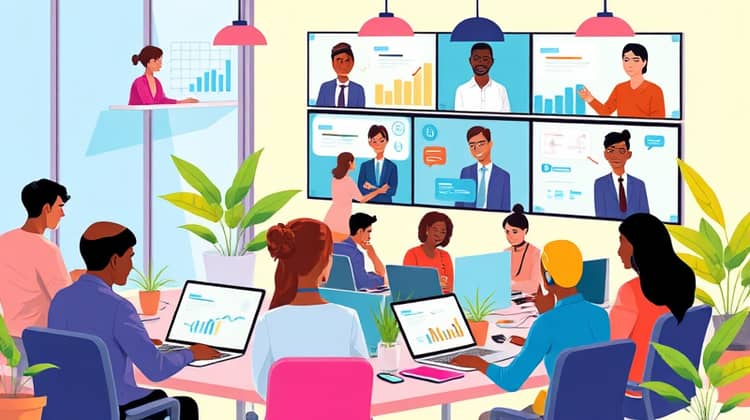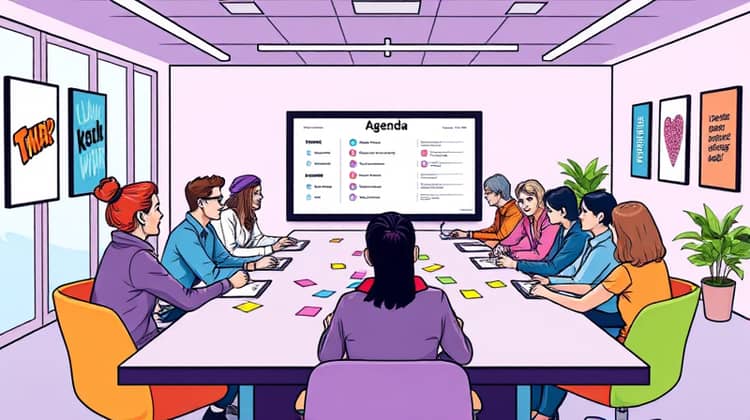Effective workplace communication is essential for fostering teamwork, ensuring transparency, and enhancing productivity within an organization. Good communication helps to create an environment where employees feel valued, understood, and motivated to contribute their best efforts. In the face of diverse work styles and interpersonal dynamics, it is crucial to establish best practices that can help everyone communicate more efficiently and effectively.
This article aims to provide a comprehensive guide to the best practices in workplace communication. By understanding different communication styles, practicing active listening, and being clear and concise, employees can bridge gaps in communication and foster a collaborative atmosphere. Furthermore, acknowledging non-verbal communication, utilizing technology wisely, and being culturally sensitive can significantly improve interactions in the workplace.
Overall, these best practices not only enhance individual relationships but also contribute to a strong organizational culture. Let's dive into the essential components of effective workplace communication.
1. Understand Different Communication Styles

One of the first steps in improving workplace communication is understanding that individuals have different communication styles. Whether it be assertive, passive, or aggressive styles, recognizing these variations can make a significant difference in how messages are conveyed and received.
Communication styles often dictate how we express our thoughts, feelings, and desires to others. An effective workplace embraces this diversity and helps employees navigate their own styles, as well as those of their colleagues. This understanding can lead to reduced misunderstandings and conflicts.
To address these differences, organizations should encourage discussions about communication preferences and promote a culture of openness. Training sessions on communication styles can equip employees with the tools they need to engage effectively with various personalities.
- Identifying your own communication style
- Observing and learning about others' styles
- Adapting your approach based on the audience
2. Active Listening

Active listening is a critical component of effective communication that often gets overlooked. It's not just about hearing the words that are spoken; it's about fully engaging with the speaker and understanding their message.
When employees practice active listening, they not only help validate the speaker's feelings but also encourage open dialogue that fosters collaboration. This practice can be particularly useful in team settings, where multiple opinions and ideas are exchanged.
To cultivate active listening, organizations can train employees to focus not only on the spoken words but also on the emotions and intentions behind them. This skill can help in building trust and rapport among team members.
- Make eye contact while listening
- Avoid interrupting the speaker
- Summarize or paraphrase to confirm understanding
3. Be Clear and Concise

Clarity and conciseness in communication are paramount to avoid misunderstandings and confusion in the workplace. Employees are often bombarded with information, and being straightforward helps capture attention and drive home important points.
When communicating, it is essential to express thoughts in a structured manner. This makes it easier for others to follow along and grasp the main ideas quickly. The use of simple language can also eliminate ambiguity and misinterpretation.
Encouraging a culture of clarity promotes efficiency since it reduces the chance of lengthy emails or discussions that lead nowhere.
- Use bullet points for key messages
- Limit jargon and unnecessary technical terms
- Encourage questions for clarification
4. Non-verbal Communication

Non-verbal communication plays a significant role in how messages are perceived in the workplace. Body language, facial expressions, and even tone of voice can convey as much meaning as spoken words.
Understanding non-verbal cues can help employees gauge the reactions and feelings of their colleagues. Being attuned to these signals can lead to more effective interactions and can help prevent miscommunication.
Employers should encourage employees to become aware of their own non-verbal communication to ensure it aligns with their messages.
- Maintain an open posture
- Be mindful of your facial expressions
- Use appropriate gestures
5. Use Technology Wisely

In today's digital age, technology plays an integral role in workplace communication. While technology can enhance connectivity, it's crucial that it is used wisely to avoid miscommunication and information overload.
Employees should be encouraged to select the right tools for the right tasks. For example, utilizing emails for formal communications, while using instant messaging platforms for quick, informal interactions can improve efficiency and clarity.
As remote work becomes more prevalent, ensuring that technology is used effectively can help maintain strong communication practices. Regular check-ins through virtual meetings can keep teams aligned.
- Choose the right communication tool
- Limit excessive email chains
- Use video calls for critical discussions
Ultimately, promoting the effective use of technology can lead to improved productivity and employee satisfaction.
6. Give and Receive Feedback

Providing and receiving feedback is a critical skill that contributes to personal and organizational growth. Effective feedback should be constructive and aimed at encouraging positive change rather than criticism.
When employees feel comfortable giving and receiving feedback, they foster an environment of continuous improvement. It is vital for leaders to model this skill by soliciting feedback from their teams and acknowledging suggestions positively.
Regular feedback sessions can help refine performance and enhance relationships among colleagues.
- Be specific in your feedback
- Focus on the behavior, not the person
- Encourage open dialogue
A culture rich in actionable feedback can lead to greater innovation and collaboration across teams.
7. Cultural Sensitivity

In today's diverse workplace, cultural sensitivity is a must for effective communication. Understanding and appreciating cultural differences can enhance collaboration and minimize misunderstandings.
Employees should be encouraged to learn about their colleagues' cultures, values, and communication preferences. This awareness can facilitate more respectful and meaningful interactions.
Organizations that prioritize cultural sensitivity create an inclusive environment where all team members feel recognized and valued.
- Respect cultural differences in communication styles
- Encourage sharing of cultural experiences
- Provide diversity training
Cultural sensitivity not only enriches workplace relationships but also supports overall organizational success.
8. Conflict Resolution

Conflict in the workplace is inevitable, but how it is handled makes all the difference. Effective communication is crucial to conflict resolution, as it allows for open dialogue and understanding.
When conflicts arise, it's essential to address them promptly and not let frustrations fester. Employees should feel empowered to bring issues to the table without fear of retribution.
Organizations can provide training on conflict resolution skills, helping employees to navigate challenging situations more effectively.
- Address conflicts directly and respectfully
- Listen to all parties involved
- Seek compromise and find common ground
By fostering a proactive approach to conflict resolution, organizations can maintain a positive work environment conducive to productivity.
9. Team Meetings

Team meetings are vital for aligning goals and boosting collaboration among team members. However, to make these meetings productive, proper communication techniques must be employed.
Clear agendas should be established prior to meetings to ensure everyone comes prepared. This transparency helps streamline discussions and keeps participants focused on the agenda items.
Encouraging participation from all team members can also enhance the quality of the discussions and foster a sense of ownership among the team.
10. Continuous Improvement

Workplace communication should be viewed as an evolving process. Continuous improvement efforts ensure that communication practices remain effective and relevant as organizations grow and change.
Regularly revisiting communication strategies and gathering feedback from employees can highlight areas for improvement and enable organizations to adapt to new challenges efficiently.














